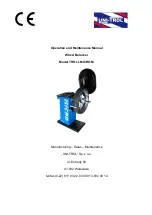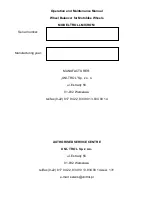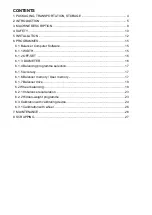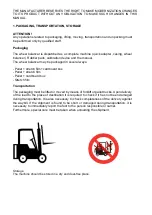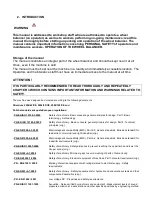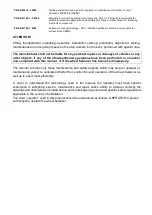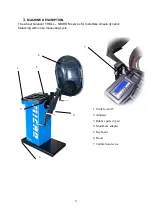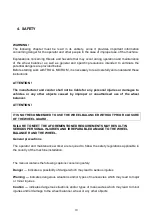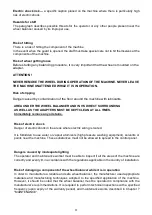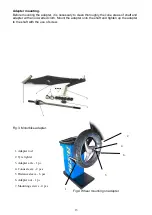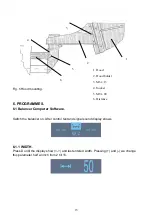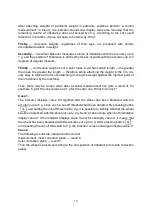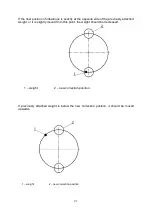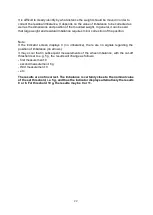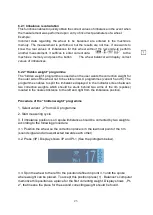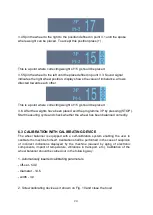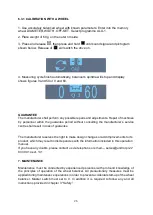
11
Electric shock risk
—
a specific caption placed on the machine where there is particularly high
risk of electric shock.
Hazards for staff
The paragraph describes possible threats for the operator or any other people present near the
wheel balancer caused by its improper use.
Risk of hitting
There is a risk of hitting the component of the machine.
In the event when the guard is opened, the staff must take special care not to hit themselves at the
components of the machine.
Risk of wheel getting loose
Before starting any balancing procedure, it is very important that the wheel is mounted on the
adapter.
ATTENTION !
NEVER REMOVE THE WHEEL DURING OPERATION OF THE MACHINE. NEVER LEAVE
THE MACHINE UNATTENDED WHILE IT IS IN OPERATION.
Risk of slipping
Danger caused by contamination of the floor around the machine with lubricants.
AREA UNDER THE WHEEL BALANCER AND IN ITS DIRECT SURROUNDING
AS WELL AS THE ADAPTERS MUST BE KEPT CLEAN AT ALL TIMES.
Immediately remove any oil stains.
Risk of electric shock
Danger of electric shock in the areas where electric wiring is routed.
It is forbidden to use water or vapour atomizers (high pressure washing equipment), solvents or
paints near the machine. These substances must not be allowed to spread to the control panel.
Dangers caused by inadequate lighting
The operator and maintenance worker must be able to inspect if all the areas of the machine are
correctly and evenly lit, in accordance with the regulations applicable in the country of installation.
Risk of damaging a component of the wheel balancer while it is in operation
In order to manufacture a reliable and safe wheel balancer, the manufacturer used appropriate
materials and manufacturing techniques adopted to the specified application of the machine.
However, it should be noted that the wheel balancer must be operated in compliance with the
manufacturer’s recommendations. It is required to perform technical inspections with a specified
frequency (upon expiry of the warranty period) and maintenance works described in Chapter 7
“MAINTENANCE”.

